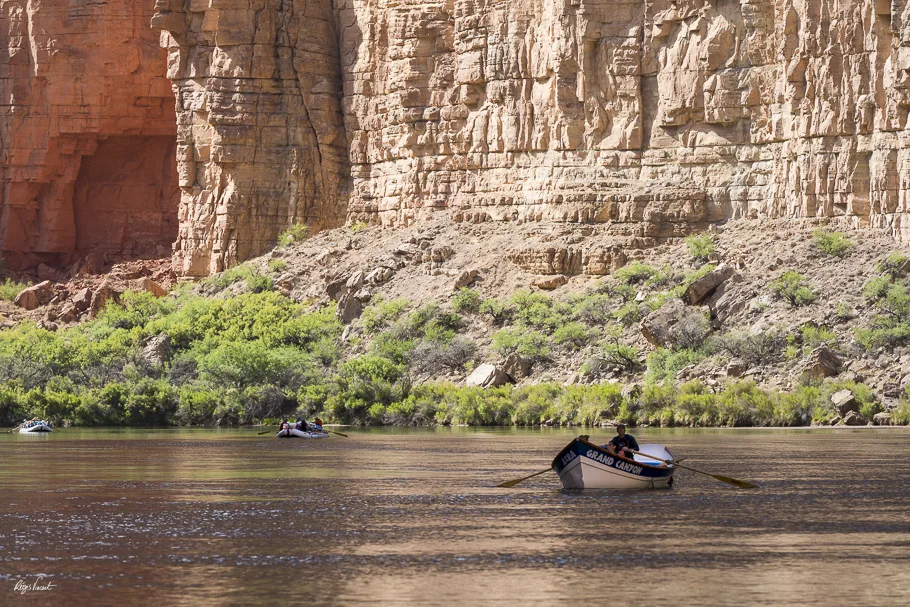In early May, I embarked on one of the most awe-inspiring and humbling adventures of my life: rafting and camping for 220 miles through the Grand Canyon along the mighty Colorado River. This isn’t just a trip—it’s a full immersion into deep geological time, wilderness serenity, and a legacy of exploration and endurance.
Why the Grand Canyon by River?
Seeing the Grand Canyon from its rim is iconic. But navigating it by river? That’s a perspective few people get to witness. Only about 25,000 individuals complete the full river journey each year, with strict daily limits ensuring minimal human impact and a profound sense of solitude.
Rafting the Colorado allows you to experience the Canyon’s hidden side—slot canyons, secret waterfalls, ancient ruins, and the mesmerizing transitions of light across rock layers that are up to 1.8 billion years old.
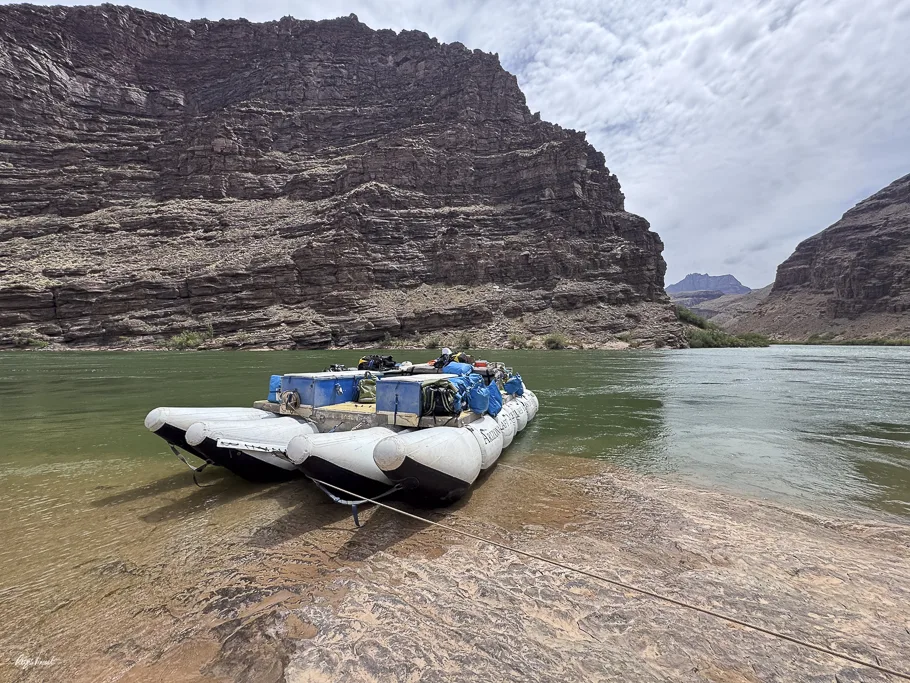
Our full itineary
Our journey through one of the world’s most spectacular river corridors began at Lee’s Ferry and concluded 226 river miles downstream at Diamond Creek. This itinerary captures ten unforgettable days navigating the Colorado River through the Grand Canyon, with daily hiking adventures, camping under star-filled skies, and experiencing some of the most dramatic landscapes on Earth.
Day 1 – May 2: Into the Canyon
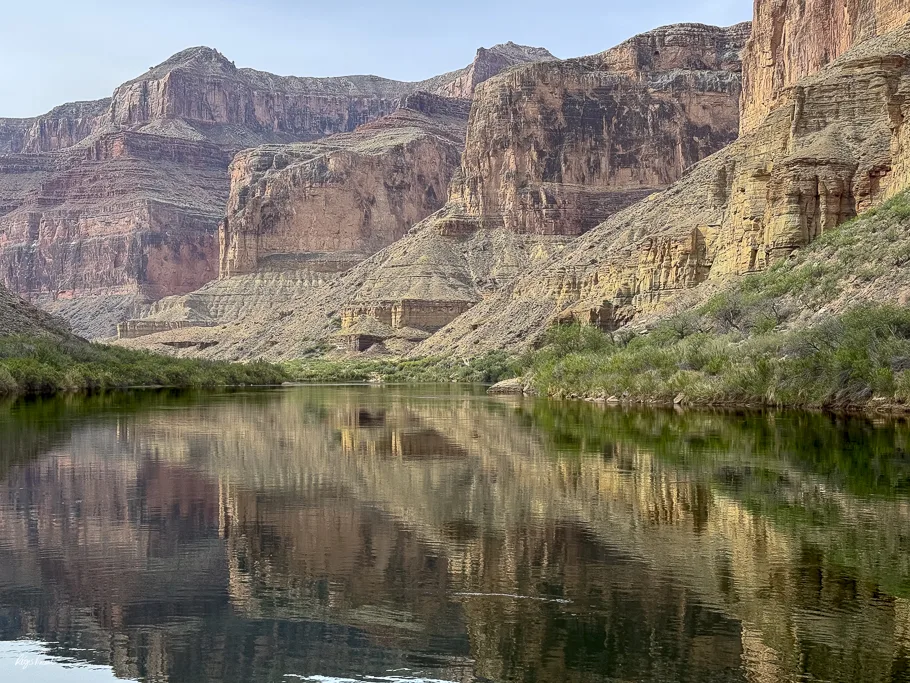
River Miles: 0-20 (20 miles)
We launched from Lee’s Ferry (Mile 0) in the late morning, immediately immersed in the towering canyon walls that would be our constant companions. Our first stop was North Canyon (Mile 20), where we took an afternoon hike to stretch our legs and begin to appreciate the scale of this incredible landscape. As the day wound down, we enjoyed a late afternoon walk on the bluff near North Canyon, watching the light change on the canyon walls before setting up camp at North Canyon Camp (Mile 20).
Day 2 – May 3: Red wall Wonders
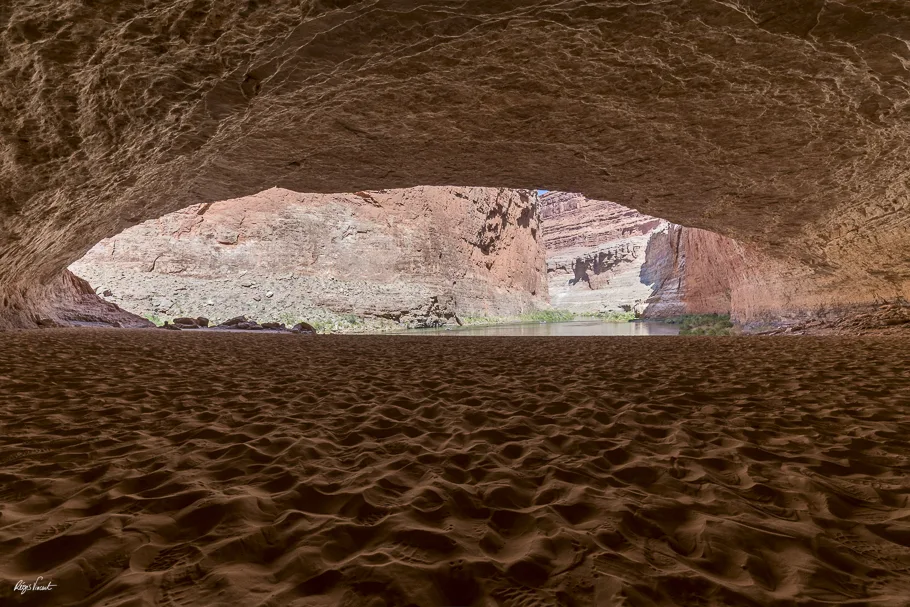
River Miles: 20-43 (31 miles)
The day began with a sunrise walk on the bluff near North Canyon, the golden light painting the canyon walls in brilliant hues. We made a memorable stop at Redwall Cavern (Mile 33), a massive limestone cave carved by the river that could supposedly hold 50,000 people according to John Wesley Powell’s famous description. The day concluded with a walk along the riverside and a hike on the bluff above President Harding Camp (Mile 43), where we spent the night.
Day 3 – May 4: Marble Canyon Float
River Miles: 43-61 (18 miles)
An early departure allowed us to savor the slow float through Marble Canyon, where the narrower confines created an intimate river experience. The afternoon brought us to the Little Colorado River confluence (Mile 61), one of the most significant tributaries of the Colorado. We hiked up the Little Colorado River, marveling at its turquoise waters, then took a late afternoon ridge hike above our camp on the west bank opposite the LCR confluence.
Day 4 – May 5: Big Water Day
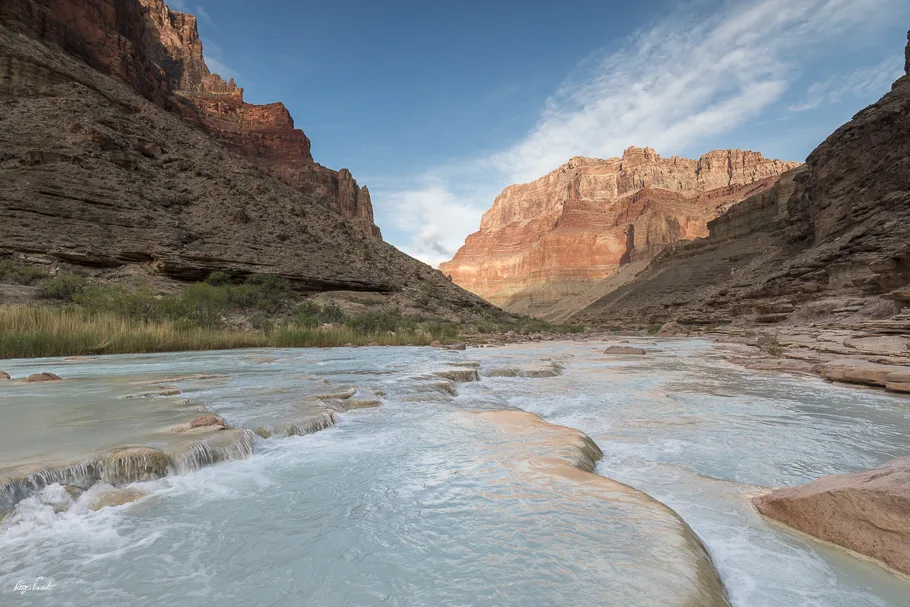
River Miles: 61-91 (31 miles)
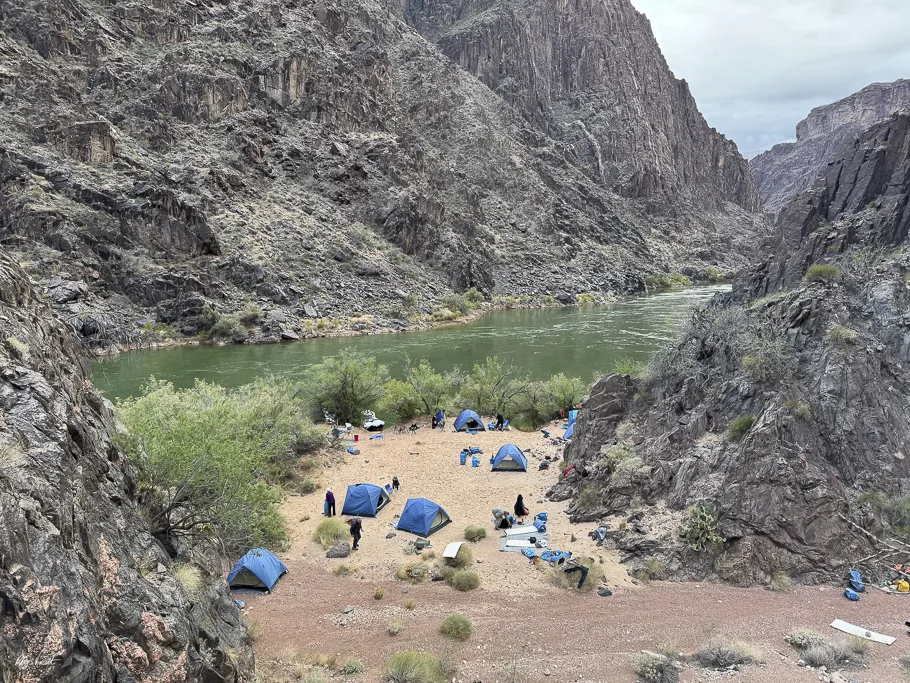
We started with an early ferry across the river and a sunrise hike at the Little Colorado River confluence, the soft morning light creating magical reflections on the water. This day brought us through some of the canyon’s big rapids, the river’s power on full display as we navigated the churning whitewater. A late afternoon scramble above camp provided stunning views before we settled in at Ninetyone Mile Creek Camp (Mile 91), where rain visited us during the night.
Day 5 – May 6: Creek Explorations
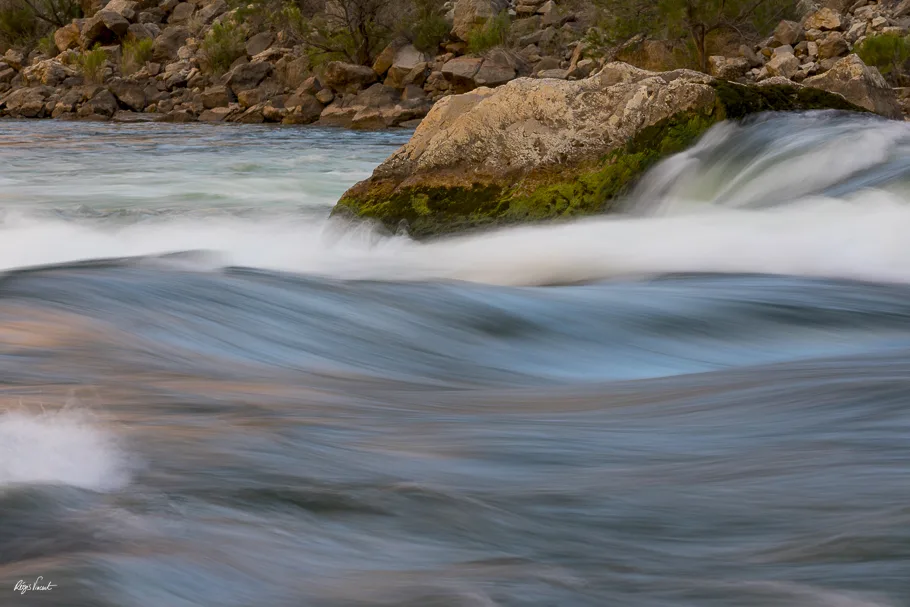
River Miles: 91-112 (21 miles)
Despite the previous night’s rain, we began with an early morning scramble in Ninetyone Mile canyon, exploring the narrow side canyon. At lunchtime, we hiked up Shinumo Creek (Mile 109), one of the few perennial streams in the canyon. The day ended with a peaceful walk along the riverside before making camp at Mile 112.
Day 6 – May 7: Chasm and Canyon
River Miles: 112-134 (22 miles)
This day was filled with iconic Grand Canyon destinations. We started with a sunrise walk along the riverside, then hiked into Elves Chasm (Mile 117), a magical grotto with a waterfall cascading into emerald pools. Blacktail Canyon (Mile 121) offered another hiking opportunity, its narrow walls and sculpted rock formations providing endless photographic opportunities. The afternoon brought a walk on the bluff above camp, where we were treated to rain and a spectacular rainbow.
Day 7 – May 8: Deer Creek to the Patio
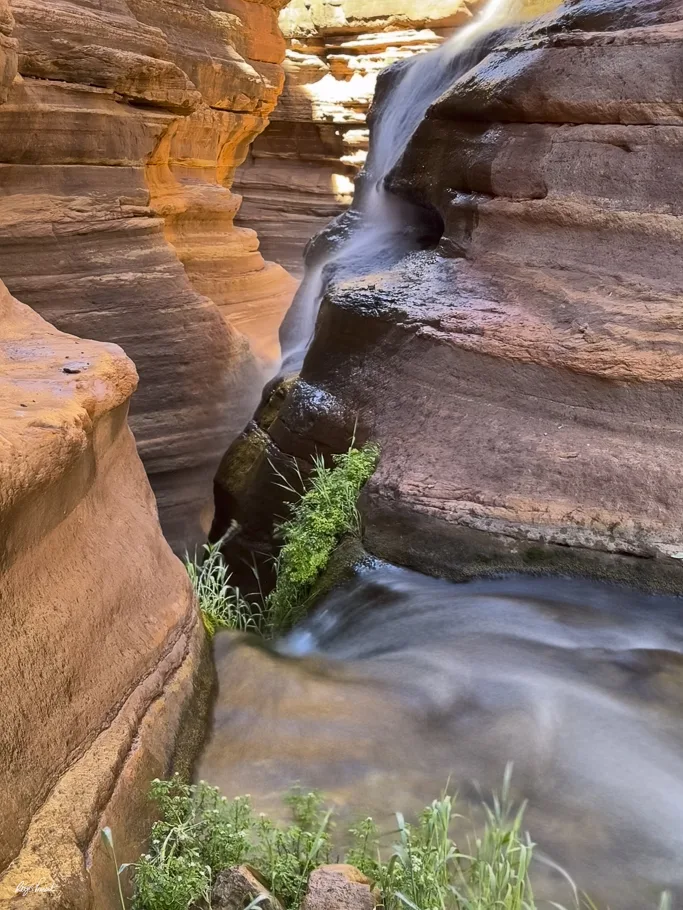
River Miles: 134-156 (22 miles)
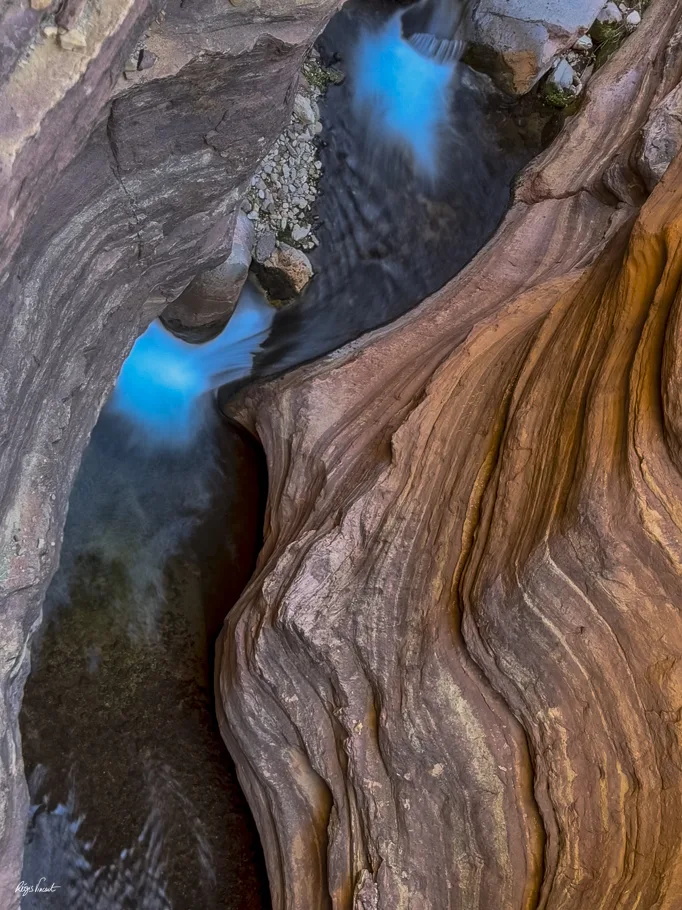
An early morning hike to Deer Creek and the famous “Patio” (Mile 137) provided one of the trip’s highlights. The narrow canyon leading to the Patio is a photographer’s dream, with smooth carved walls and perfect light. We spent time photographing from camp before continuing downstream to Upper Ledges/Last Chance Camp (Mile 156), where we slept under the stars without tents.
Day 8 – May 9: Havasu and National Canyons
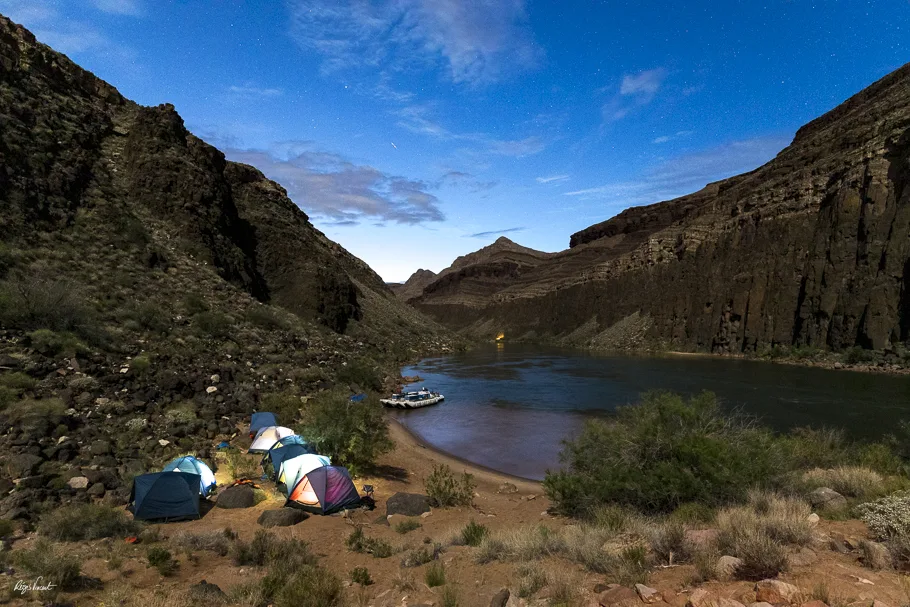
River Miles: 156-167 (11 miles)
Though we covered fewer river miles, this day was packed with adventure. An early morning hike into Havasu Canyon (Mile 157) revealed stunning blue-green pools and waterfalls. Late afternoon brought us to National Canyon (Mile 167), another photographer’s paradise with its slot canyon characteristics.
Day 9 – May 10: The Long Haul
River Miles: 167-213 (46 miles)
This hot day required our longest mileage on the river. Despite the heat, we made a late afternoon stop to explore the water-carved rocks at Mile 213, marveling at the river’s sculptural power. We gratefully arrived at Pumpkin Springs Camp (Mile 213) as the day cooled.
Day 10 – May 11: Journey’s End
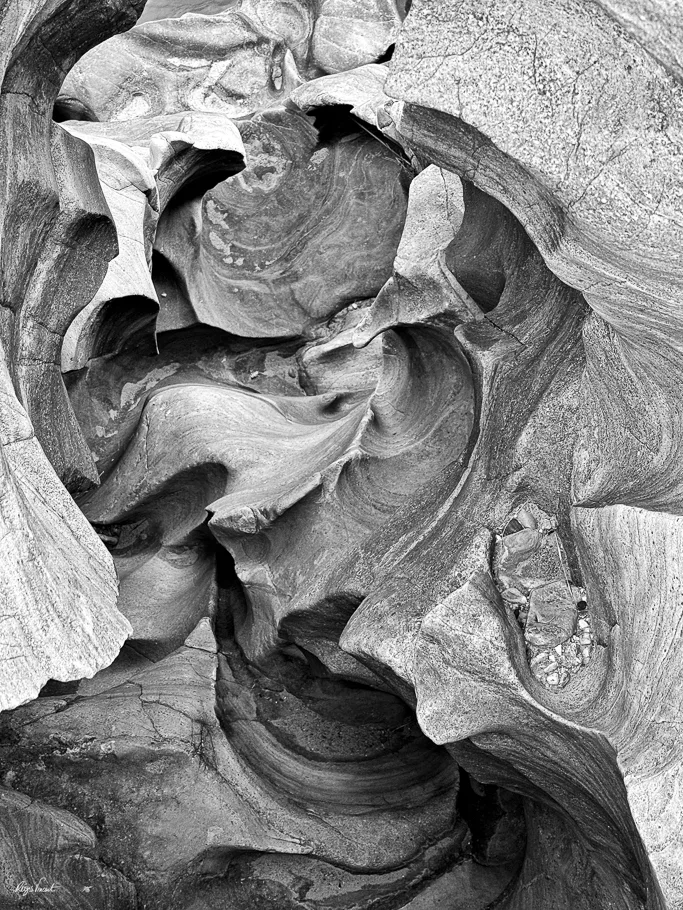
River Miles: 213-226 (13 miles)
Our final day began with a sunrise walk among the water-carved rocks at Mile 213, a peaceful farewell to the canyon’s artistry. We reached our takeout point at Diamond Creek (Mile 226), where our river journey concluded. From there, we returned to Flagstaff, carrying with us memories of an extraordinary passage through one of the world’s most magnificent landscapes.
Daily Life on the River
Now you have an idea of our overall itinerary, let’s talk about what a typical day looked like.
Rise and Shine (5:00 AM – Coffee Call)
Each day began with a pre-dawn wakeup, announced by the sweet aroma of cowboy coffee and the call of “coffee’s on!” I slept without a tent most nights, under a blanket of stars and often a radiant full moon. Early mornings were my favorite—time to grab a camera and capture the quiet beauty before sunlight reached the canyon floor. It often takes hours for those first rays to illuminate the riverbed, which made the golden-hour light uniquely dramatic.
Breakfast and Camp Breakdown (5:30 – 7:30 AM)
By 5:30 AM, we gathered for breakfast. Kudos to Arizona Raft Adventures (AzRA)—their food was incredible. With options for all dietary needs, the meals were rich in fruits, salads, and hearty ingredients that kept us going all day. Afterward, we broke down our campsite and packed our gear onto the boats—photobag, daybag, night bag, tent bag, and shared kitchen gear. It’s a team effort, repeated daily, and it builds a rhythm.
On the River: Rapids and Hikes (7:30 AM – 3:00 PM)
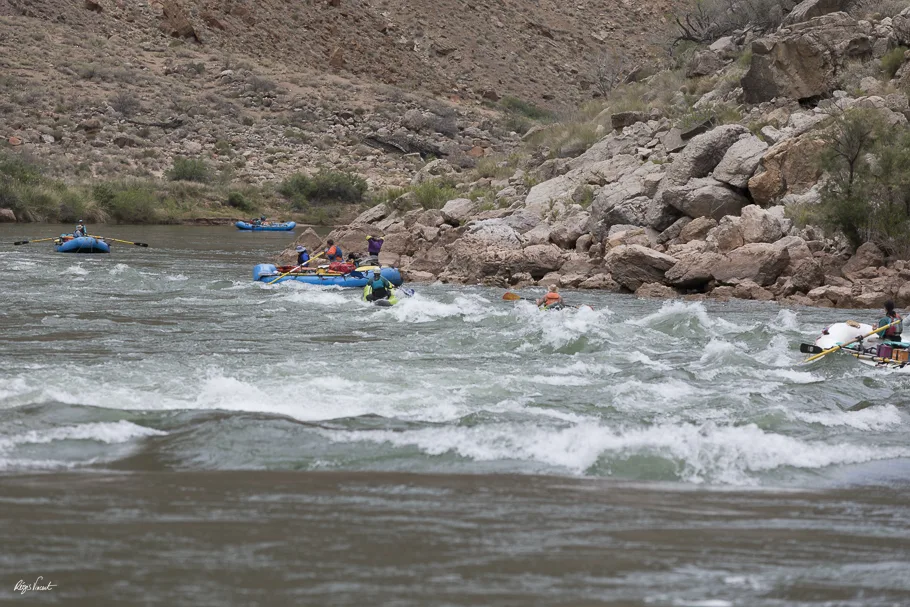
Once launched, we floated and bounced through the Grand Canyon’s famous whitewater rapids. From smooth drifts to Class IV waves, each rapid brought excitement and respect for the guides—ours, Ed and Finger, were seasoned pros. (Ed has done this run over 300 times.)
We stopped for lunch and hikes in shaded side canyons. Some led to pools, ancient granaries, or petroglyph-covered walls left by the Ancestral Puebloans. These moments were a chance to stretch our legs and touch the living history of this region.
Camp, Photography & Sunset (3:00 PM – 7:00 PM)
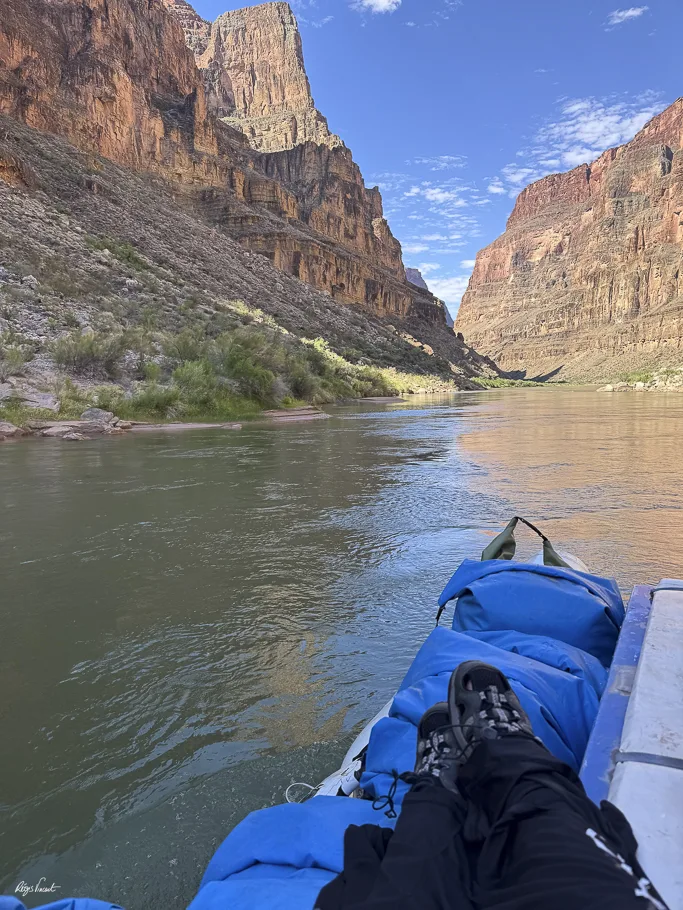
Afternoons brought us to a new beach to set up camp. Once gear was unloaded and the kitchen and portable bathroom (“groover”) were ready, our scout team—Tuan and Oliver—would suggest photo ops. The soft light post-5 PM made the canyon glow in hues of amber, rose, and ochre. Whether you were an avid photographer or just a sunset admirer, this was a magical time of day.
Dinner and Wind-Down (7:00 PM – Nightfall)
Dinner was a feast: grilled salmon, steaks, burgers, robust sides, and even fresh-baked cake. AzRA doesn’t skimp when it comes to river cuisine. Afterward, we swapped stories under the stars, sometimes sharing our favorite shots from the day, or just letting the river’s hush lull us to sleep.
What You Need to Know Before You Go
This journey isn’t a luxury cruise—it’s a wilderness experience that rewards those ready to fully engage with nature. Here’s what to expect:
1. Physical Fitness is Key
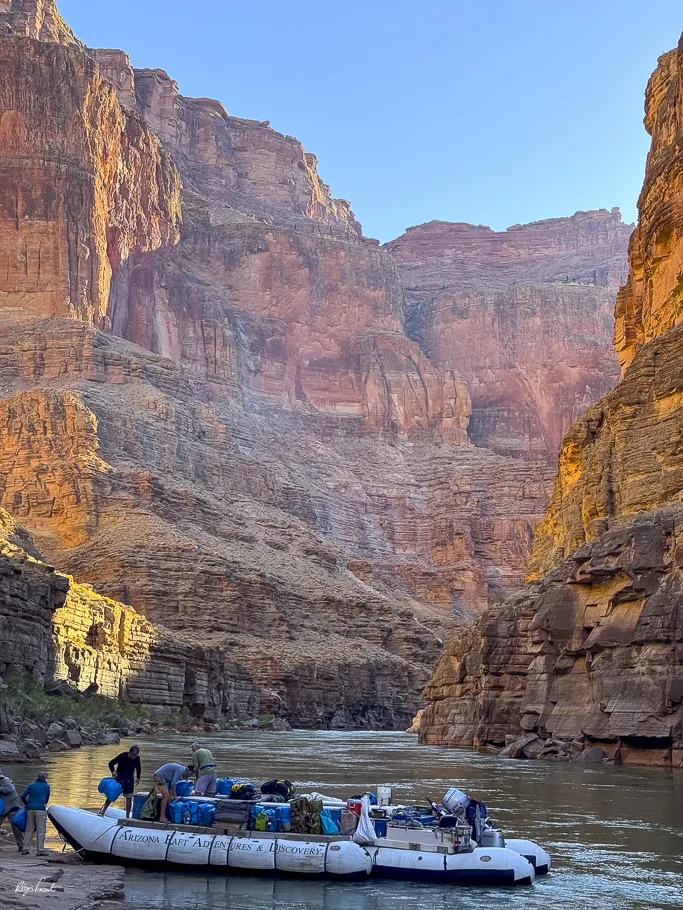
- You’ll need to climb in and out of rafts, hike up steep trails, and carry gear daily.
- Most campsites are on sand or rock; be prepared for uneven terrain and basic comforts.
2. Camping Conditions
- You’ll be sleeping on the ground—either on pads under the stars or in tents.
- There are no showers. A dip in the Colorado (which is a brisk 55°F!) is your best bet for “washing up.”
- There is no network down in the Grand Canyon, so expect 10 days of complete disconnect.
3. Variable Climate
- Be ready for extremes: cool mornings, 100°F afternoons, sudden downpours, and chilly nights.
- Shade is minimal on the raft. A good hat, SPF gear, and constant hydration are a must.
The History Beneath the Oars
The Colorado River has been sculpting the Grand Canyon for over six million years, cutting through ancient rock layers like Vishnu Schist, Bright Angel Shale, and Kaibab Limestone. These striations aren’t just geological marvels—they’re a visible record of Earth’s history, layer by layer.
But the Grand Canyon is more than stone and water. For thousands of years, it has been home to Indigenous peoples whose deep connection to the land continues today. The Havasupai, Hualapai, Navajo, and Hopi communities remain vibrant stewards of this region, each with their own stories, traditions, and sacred places embedded in the canyon walls.
In 1869, explorer John Wesley Powell, a one-armed Civil War veteran, led the first documented expedition by boat through the canyon. With wooden boats, limited maps, and no precedent, Powell’s journey was equal parts science, bravery, and survival. His voyage didn’t just chart the river—it helped shape how the American West was understood and imagined.
Following the Water’s Legacy
As you float down the river today, you’re moving in the wake of Powell’s legacy—but with the privilege of time and presence. Unlike the vast majority of Grand Canyon visitors who spend less than four hours peering from the Rim, you’re traveling slowly, experiencing the canyon from within—at water level, immersed in its rhythms.
Along the way, you’ll encounter the Colorado River’s affluents—its tributaries and washes—each a thread in this ecological tapestry. The Little Colorado River, the turquoise flow of Havasu Creek, and countless unnamed canyons and ephemeral streams feed into the main river. Some burst with life—cascading waterfalls, lush hanging gardens, deep blue pools. Others trickle through sandy beds, nearly dry, yet still essential to the desert ecosystem.
Every side canyon tells a different story. Some hold sacred spaces, others hidden grottos or cool, shaded alcoves. Whether flowing or dry, every tributary is a portal to another world within the canyon.
Final Thoughts: A Rare Window into Wilderness
This 220-mile journey is more than just a physical adventure. It’s a spiritual and emotional reconnection with the Earth’s deep time, with others, and with oneself. The community on the river is tight-knit, supportive, and full of joy. Each bend in the river reveals something new—whether it’s a hidden waterfall, a desert bighorn sheep, or a color palette that no photo can fully capture.
If you’re ready to disconnect to reconnect, the Colorado River will meet you with open arms—and the Grand Canyon will never leave your heart.


